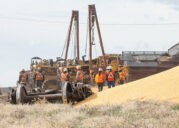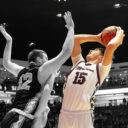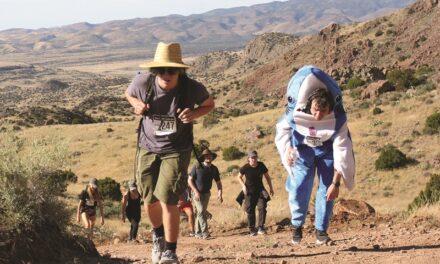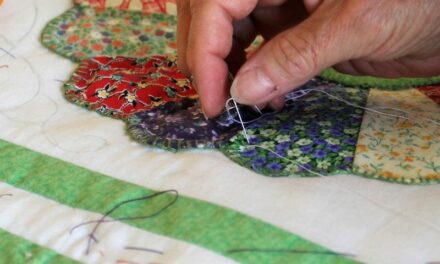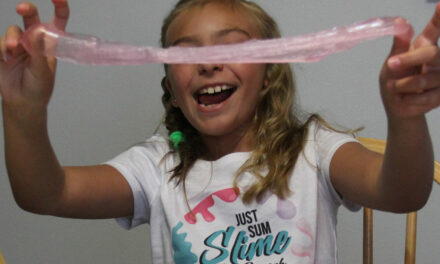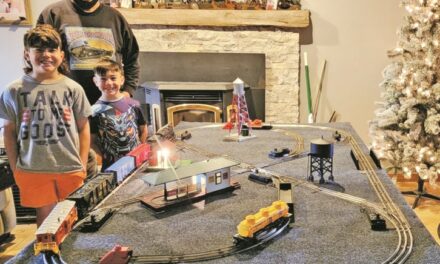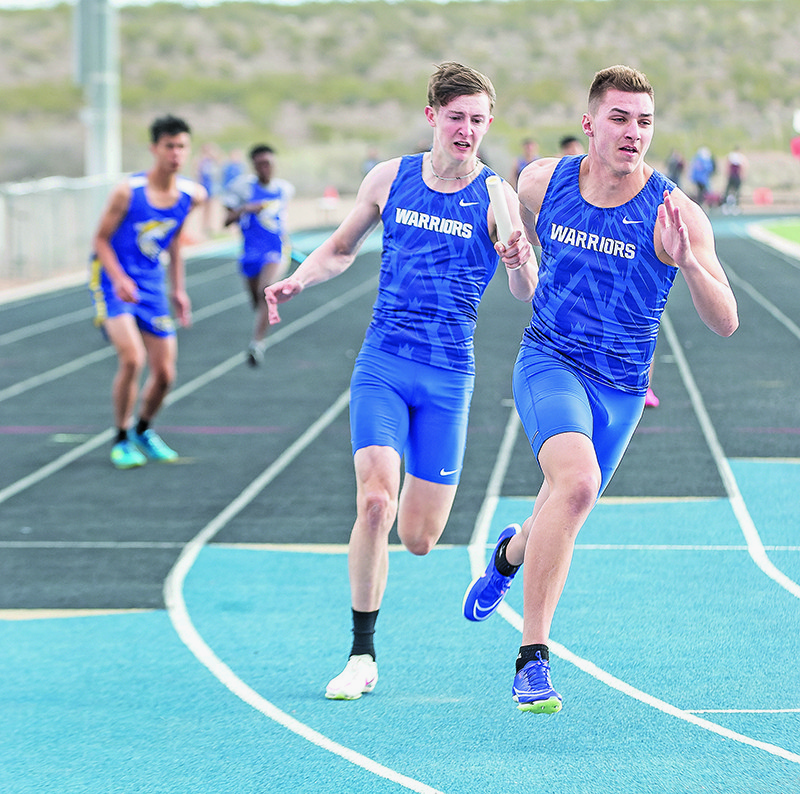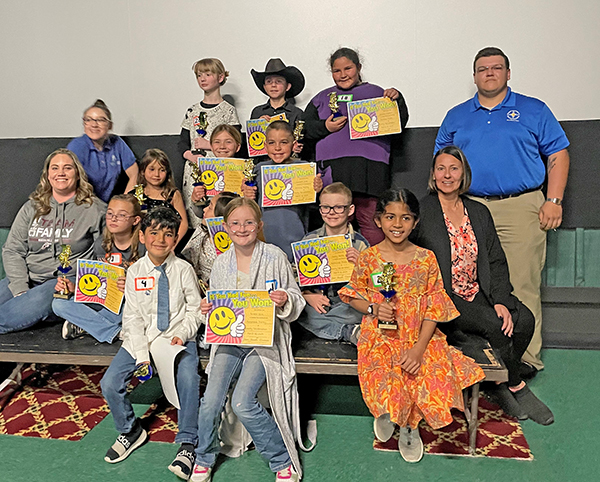
tourists are dwarfed by the Very Large Array’s visitors’ antenna Saturday during a New Mexico Tech 49ers Celebration tour.
Russell Huffman | El Defensor Chieftain photos
The quiet reopening of the Very Large Array was met with glee by the public and came at a perfect time for the New Mexico Tech homecoming celebration over the weekend in Socorro.
Around 20 people with ties to NMT made the 50-mile trip west of Socorro on Oct. 14 to gaze and gawk at the massive Karl G. Jansky Very Large Array (VLA), a centimeter-wavelength radio astronomy observatory — a place where Earth listens to space.
The VLA may have the best “ears” on the planet. Still, it is helping astronomers paint a picture of our galaxy, and it has made significant discoveries like black holes and protoplanetary disks around young stars while recording complex gas motions at the Milky Way’s center.
The discoveries are numerous, and so are the scientists standing in line to present their proposals for the array’s use.
Based on a twin-track railroad system (13 miles long) shaped like a Mercedes Benz hood ornament (or peace sign), the VLA is a system of radio antennas that can be opened and closed like the aperture of a camera. A very tight array presents a broad view of space, and a wide arrangement results in a tight and amplified view.
Twenty-seven independent antennas with 82-feet diameter dishes combine to make one gigantic radio telescope. They make up a colossal virtual satellite dish.
The VLA has a cult following and is like a rock star your parents never heard of, but you and your friends are tuned in. The rock band Bon Jovi highlighted the VLA on its 2002 album cover Bounce, and the VLA has been the backdrop for several movies.
While there may be the off chance the VLA will be the first place Earth detects an alien signal like in the 1997 film “Contact” — the site remains dedicated to advancing our knowledge of space.
Upgrades and modifications are on the horizon for the VLA, and the massive antennas now in use are expected to be replaced by a smaller set of antennas in a fixed array. The antennas can be turned off and configured.
The downtime lost by moving the cumbersome units now in place will also be a plus.
Tossing aside the scientific aspect of the VLA allows one to simply “nerd out” on space, and the technology used to listen can bring in the kid in a scientist like Bob Bell. He had calmly waited for two years to make a promised birthday trip to the VLA before it was shut down to the public due to COVID.
Bob and his wife, Jane, had a double purpose in visiting homecoming at NMT with a plan for setting up a scholarship in Jane’s father’s memory and Bob’s long-awaited visit.
Up until a few years ago, Bell was unaware the VLA existed.

Steven Jacquier snaps a VLA picture to share with his online Ukrainian friend Vlad.
“I went to a reunion a few years ago at Cal-Tech, and one of the people who was a director here at the BLM just got talking about it. I was completely unaware of the VLA because my area of science is not this area of science,” Bell said. “Seeing beyond has always been important. And I don’t mean that necessarily as a scientist, you can do that in the arts. You can do that in growing as a person. You want to explore the boundaries.”
He ‘bearly’ knows him
Steven Jacquier has never met his chess-playing friend “Vlad,” who lives in war-torn Ukraine, but he has made it his mission to lift his online friend’s spirits with the tiny teddy bear he carries with him on excursions.
Jacquier was busy lining up the bear for photographs with the VLA antennas in the background. The care and time he took drew questions about why he was up to his craft.
“I do it to let him know others care about him and to lift his spirits,” Jacquier said. “I will send him this and my next chess move, too.”
It’s been 50 years
Jacquier was accompanying 1972 NMT graduate Doran Vaughan on the VLA tour, and it’s been a decade since Vaughan has been back on campus. Neither of his two most recent visits was like the culture shock he experienced as a smooth-faced teenager in the late 1960s.
“It was a pretty major culture shock. Because the only places I had been when I was growing up in Virginia were West Virginia, Tennessee, Philadelphia and New York because my mother was from Brooklyn, New York,” Vaughan said. “I’m on this tour because I had no idea about the VLA. I wanted to look to see and learn what was happening here. And there’s just amazing stuff happening in New Mexico.”
VLA has certain restrictions
While the VLA is again open to the public, there are Covid restrictions in place that include vaccinations and boosters. Visitors are welcome Thursday through Sunday, 9 a.m. to 4 p.m.
The visitor center features an award-winning documentary narrated by actress Jodie Foster. More information is at public.nrao.edu/visit/very-large-array/.

